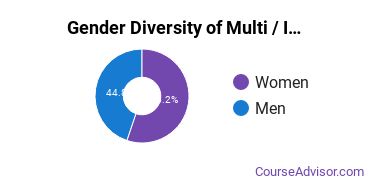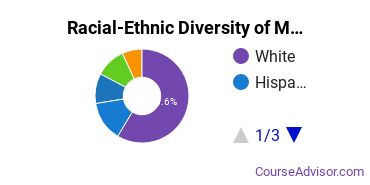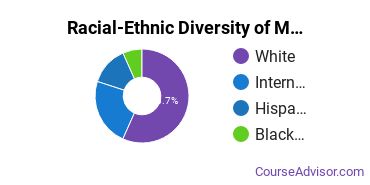Multi / Interdisciplinary Studies at Rochester Institute of Technology
RIT is located in Rochester, New York and approximately 16,158 students attend the school each year.
Want to know more about the career opportunities in this field? Check out the Careers in Multi / Interdisciplinary Studies section at the bottom of this page.
RIT Multi / Interdisciplinary Studies Degrees Available
- Bachelor’s Degree in Multi / Interdisciplinary Studies
- Master’s Degree in Multi / Interdisciplinary Studies
Online Classes Are Available at RIT
If you are a working student or have a busy schedule, you may want to consider taking online classes. While these classes used to be mostly populated by returning adults, more and more traditional students are turning to this option.
Are you one of the many who prefer to take online classes? RIT offers distance education options for multi / interdisciplinary studies at the following degree levels:
- Master’s Degree
RIT Multi / Interdisciplinary Studies Rankings
The multi / interdisciplinary studies major at RIT is not ranked on College Factual’s Best Colleges and Universities for Multi / Interdisciplinary Studies. This could be for a number of reasons, such as not having enough data on the major or school to make an accurate assessment of its quality.
There were 1 student who received their doctoral degrees in multi / interdisciplinary studies. This is the #133 most popular school in the United States for this category of students.
Multi / Interdisciplinary Studies Student Demographics at RIT
Take a look at the following statistics related to the make-up of the multi / interdisciplinary studies majors at Rochester Institute of Technology.
RIT Multi / Interdisciplinary Studies Bachelor’s Program

About 69% of those who receive a bachelor's degree in multi / interdisciplinary studies at RIT are white. This is above average for this degree on the nationwide level.
The following table and chart show the race/ethnicity for students who recently graduated from Rochester Institute of Technology with a bachelor's in multi / interdisciplinary studies.

| Race/Ethnicity | Number of Students |
|---|---|
| Asian | 1 |
| Black or African American | 3 |
| Hispanic or Latino | 2 |
| White | 18 |
| International Students | 0 |
| Other Races/Ethnicities | 2 |
RIT Multi / Interdisciplinary Studies Master’s Program

The following table and chart show the race/ethnicity for students who recently graduated from Rochester Institute of Technology with a master's in multi / interdisciplinary studies.

| Race/Ethnicity | Number of Students |
|---|---|
| Asian | 0 |
| Black or African American | 3 |
| Hispanic or Latino | 0 |
| White | 9 |
| International Students | 8 |
| Other Races/Ethnicities | 2 |
Concentrations Within Multi / Interdisciplinary Studies
If you plan to be a multi / interdisciplinary studies major, you may want to focus your studies on one of the following concentrations. The completion numbers here include all graduates who receive any type of degree in this field from Rochester Institute of Technology. Some of these focus areas may not be available for your degree level.
| Concentration | Annual Degrees Awarded |
|---|---|
| Other Multi/Interdisciplinary Studies | 24 |
| International Studies | 11 |
| Museum Studies | 10 |
| Sustainability Science | 7 |
| Digital Humanities and Textual Studies | 7 |
| Nutrition Science | 1 |
Related Majors
Careers That Multi / Interdisciplinary Studies Grads May Go Into
A degree in multi / interdisciplinary studies can lead to the following careers. Since job numbers and average salaries can vary by geographic location, we have only included the numbers for NY, the home state for Rochester Institute of Technology.
| Occupation | Jobs in NY | Average Salary in NY |
|---|---|---|
| Accountants and Auditors | 110,780 | $96,300 |
| Community and Social Service Specialists | 15,510 | $56,110 |
| Medical Scientists | 9,500 | $95,170 |
| Labor Relations Specialists | 7,890 | $85,870 |
| Professors | 6,440 | $112,000 |
References
*The racial-ethnic minorities count is calculated by taking the total number of students and subtracting white students, international students, and students whose race/ethnicity was unknown. This number is then divided by the total number of students at the school to obtain the racial-ethnic minorities percentage.
- College Factual
- National Center for Education Statistics
- O*NET Online
- Image Credit: By Matthew D. Wilson (LtPowers) under License
More about our data sources and methodologies.
